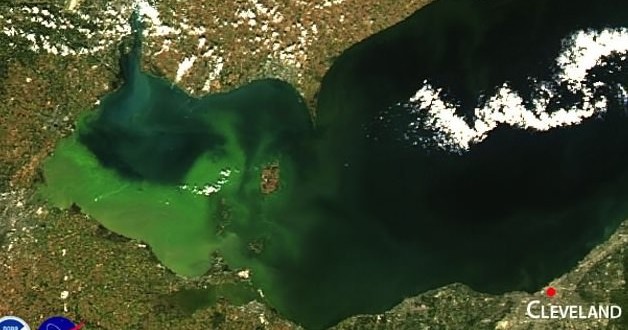Toxic algae blooms are to return to western Lake Erie this summer, threatening marine life and humans wading in these waters, according to predictions by the NOAA released Thursday.
Cyanobacteria, a harmful blue-green alga, is expected to rear its ugly head in late summer, though forecasts note that the bloom will most likely be smaller than last year’s intense bloom, and considerably less than the record-setting 2011 bloom.
The algae will collect on certain shorelines instead of spreading out evenly across the lake, according to the NOAA.
“With this information, we can work collectively to understand harmful algal blooms and mitigate risk to humans and marine ecosystems,” Holly Bamford, assistant NOAA administrator for the National Ocean Service, said.
The forecast for 2014 predicts that 24,250 tons of blue-green algae to cover Lake Erie’s waters. The average since 2004 has been 15,430 tons, according to Great Lakes Echo.
The toxic blooms happen when fertilizer runoff feeds the runaway growth of cyanobacteria. This is the third consecutive year that the agency has warned of its presence in Lake Erie, a critical water source for millions of people in both the United States and Canada.
Decaying cyanobacteria suck of oxygen and create dead zones, make the algae toxic to both marine life and humans. Some kinds of algae can emit toxins that damage the nerves, skin, liver or kidneys of humans and other animals.
According to Nature World News, “Algal blooms choked Lake Erie waters in the 1960s and 1980s when they were in abundance, and returned with a vengeance in 2000 when farmers changed how they applied fertilizer to their crops, according to studies by researchers at the University of Michigan and other institutions. Scientists also think climate change is in part to blame as well, making Lake Erie waters warmer and more hospitable for blue-green algae.”
The emergence of the toxic algae in Lake Erie is a setback for many in Ohio and other communities.
Agencies/Canadajournal

 Canada Journal – News of the World Articles and videos to bring you the biggest Canadian news stories from across the country every day
Canada Journal – News of the World Articles and videos to bring you the biggest Canadian news stories from across the country every day

